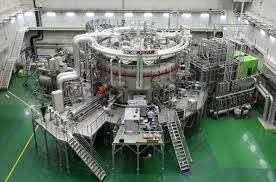For 30 seconds, a Korean nuclear fusion reactor reaches 100 million °C.
The most recent evidence that nuclear fusion is transitioning from being a physics problem to an engineering one is a continuous, steady experiment.
At temperatures over 100 million degrees Celsius, a nuclear fusion reaction has been observed to last for 30 seconds. The simultaneous achievement of heat and stability takes us closer to a functional fusion reactor, provided that the process can be scaled up, even though the duration and temperature alone are not records.
The majority of scientists concur that practical fusion power is still decades away, while small but steady improvements in knowledge and outcomes keep appearing. Conceptual designs for a commercial reactor are being developed in response to a 2021 experiment that produced a reaction with sufficient energy to sustain itself.
